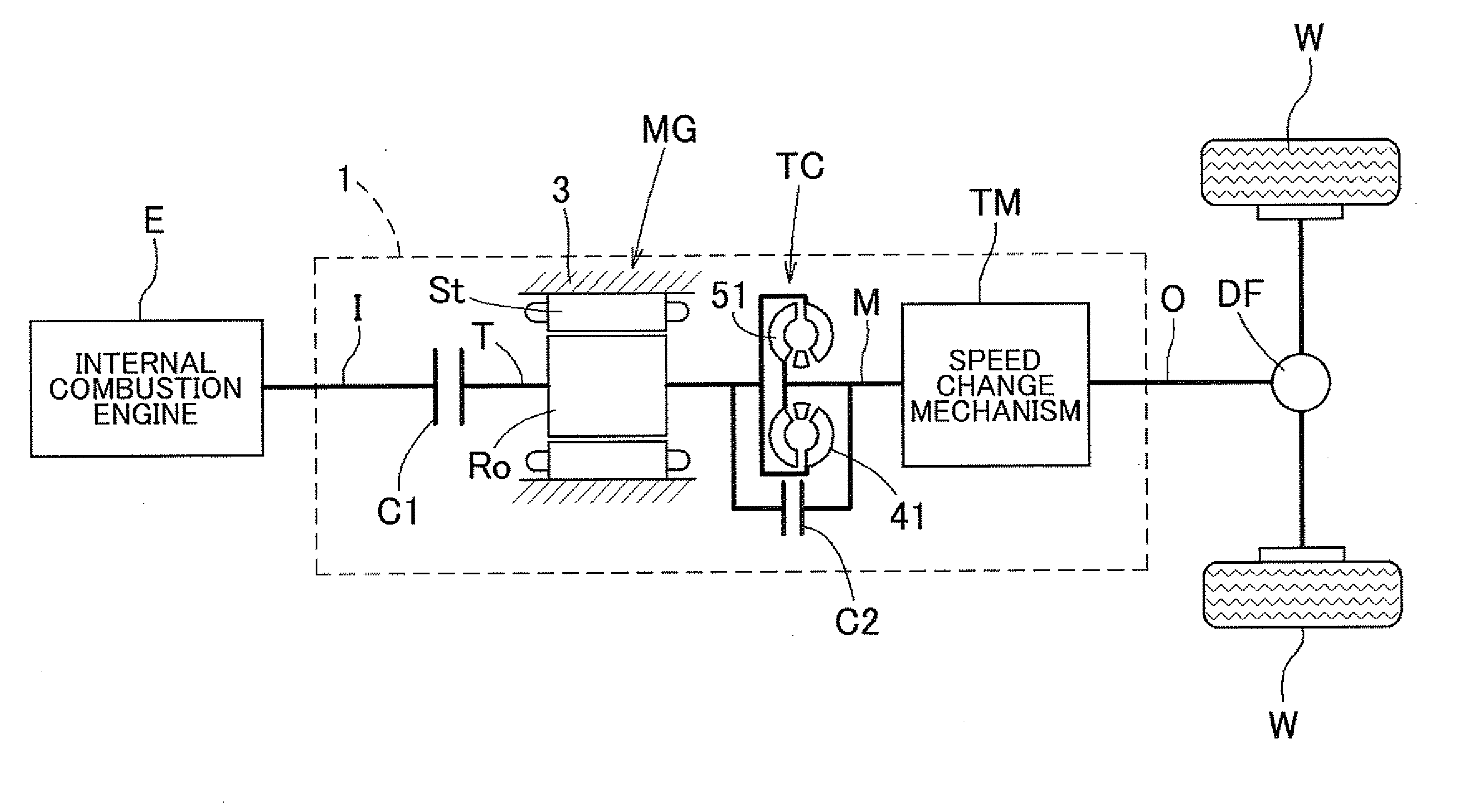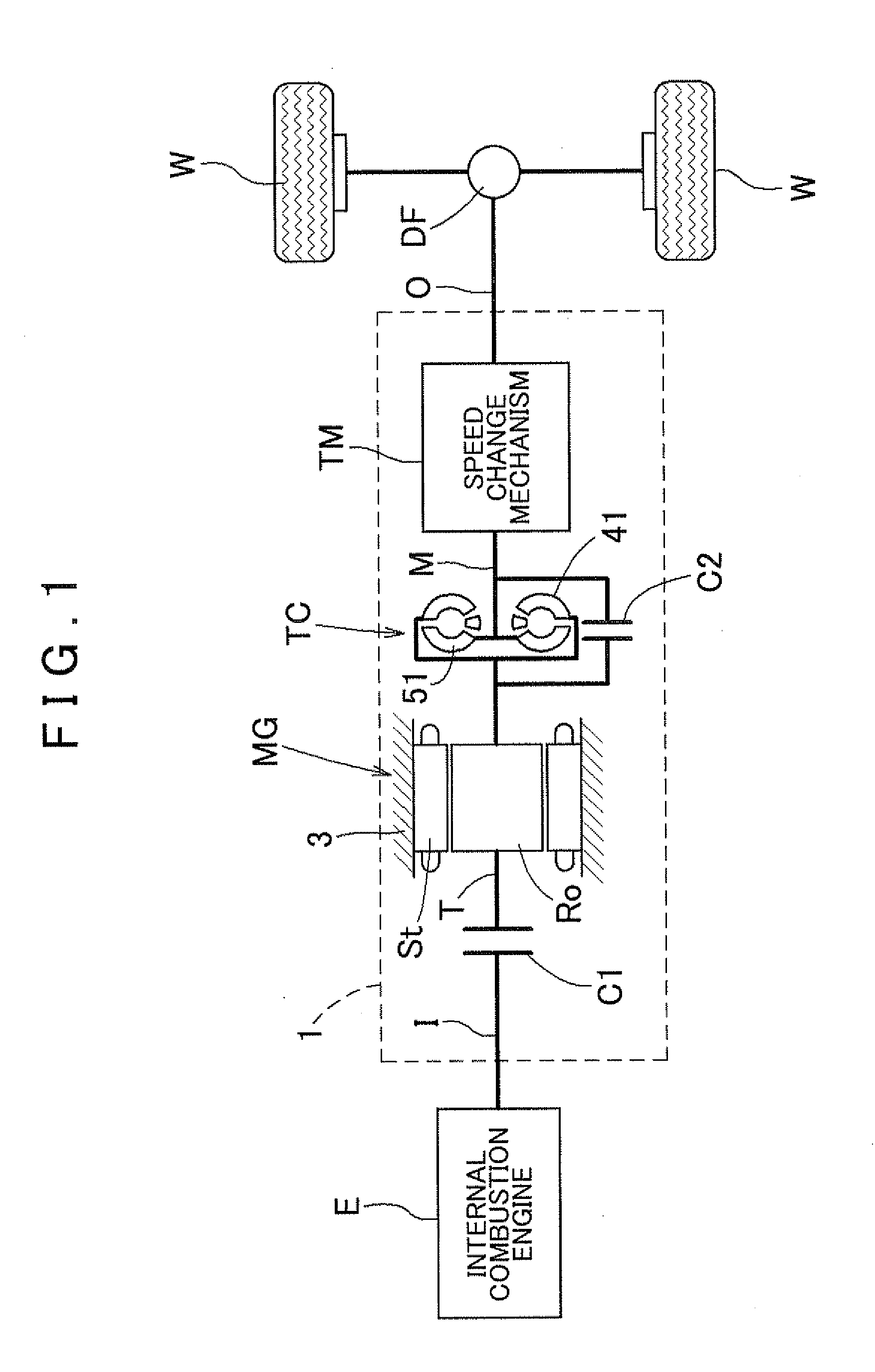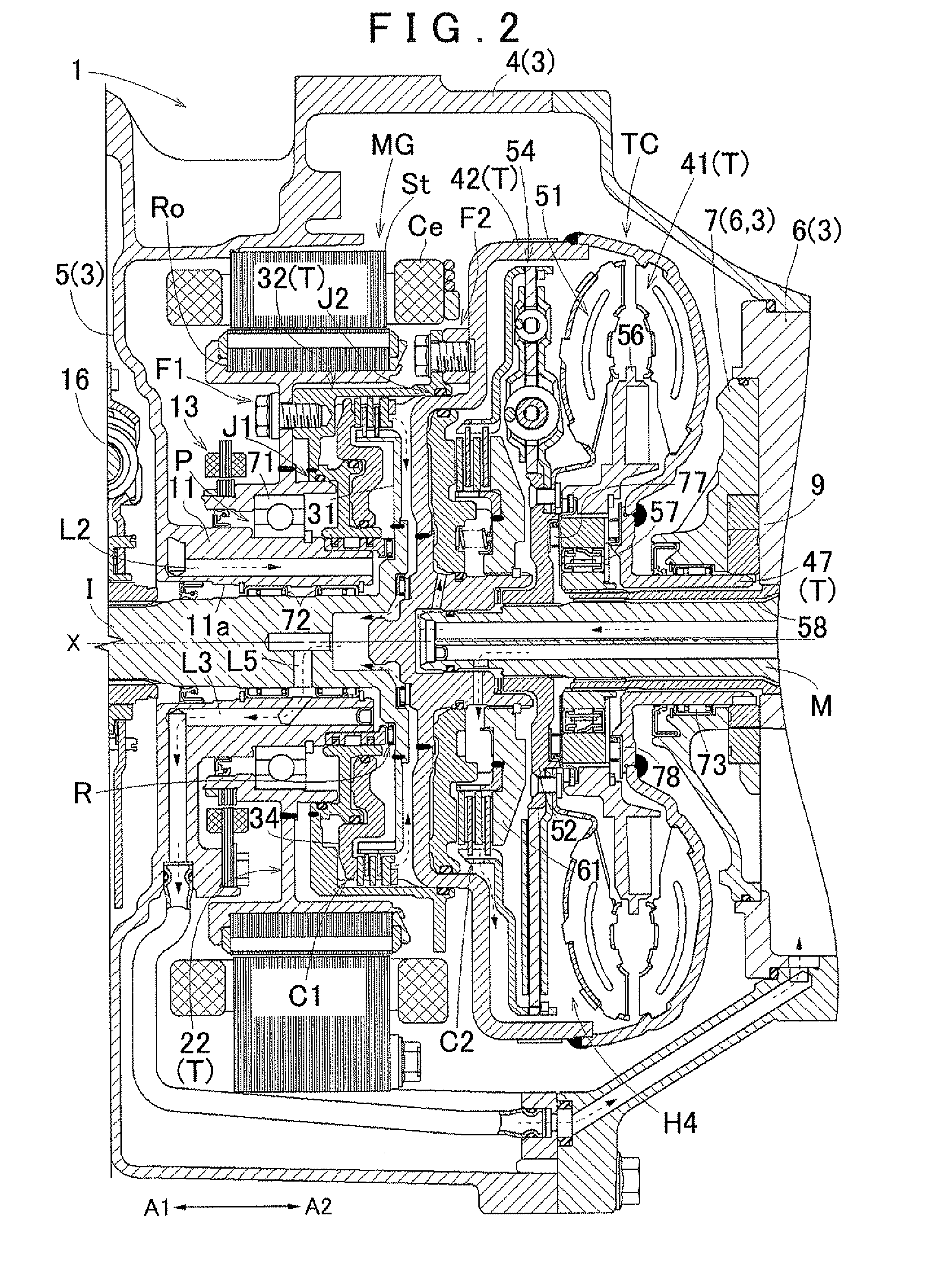Vehicle drive device
a technology for driving devices and vehicles, applied in the direction of capacitor propulsion, battery/cell propulsion, gearing, etc., can solve the problems of increasing the size and manufacturing cost affecting the operation of vehicle drive devices, and affecting the relative movement in the axial direction between the coupling output side member and the driven member in some cases. , to achieve the effect of increasing the size of the supporting bearing
- Summary
- Abstract
- Description
- Claims
- Application Information
AI Technical Summary
Benefits of technology
Problems solved by technology
Method used
Image
Examples
Embodiment Construction
[0032]An embodiment of the present invention will be described below with reference to the accompanying drawings. As shown in FIG. 1, a drive device 1 is a drive device for hybrid vehicles (a hybrid drive device) using one or both of an internal combustion engine E and a rotating electrical machine MG as a driving force source of a vehicle. The drive device 1 is structured as a drive device for so-called one-motor parallel type hybrid vehicles. The drive device 1 of the present embodiment will be described in detail below.
1. Overall Structure of Drive Device
[0033]First, the overall structure of the drive device 1 of the embodiment will be described below. As shown in FIG. 1, the drive device 1 includes an input shaft I drivingly coupled to the internal combustion engine E as a first driving force source of a vehicle, an output shaft O drivingly coupled to wheels W, the rotating electrical machine MG as a second driving force source of the vehicle, and a torque converter TC. The driv...
PUM
 Login to View More
Login to View More Abstract
Description
Claims
Application Information
 Login to View More
Login to View More - R&D
- Intellectual Property
- Life Sciences
- Materials
- Tech Scout
- Unparalleled Data Quality
- Higher Quality Content
- 60% Fewer Hallucinations
Browse by: Latest US Patents, China's latest patents, Technical Efficacy Thesaurus, Application Domain, Technology Topic, Popular Technical Reports.
© 2025 PatSnap. All rights reserved.Legal|Privacy policy|Modern Slavery Act Transparency Statement|Sitemap|About US| Contact US: help@patsnap.com



